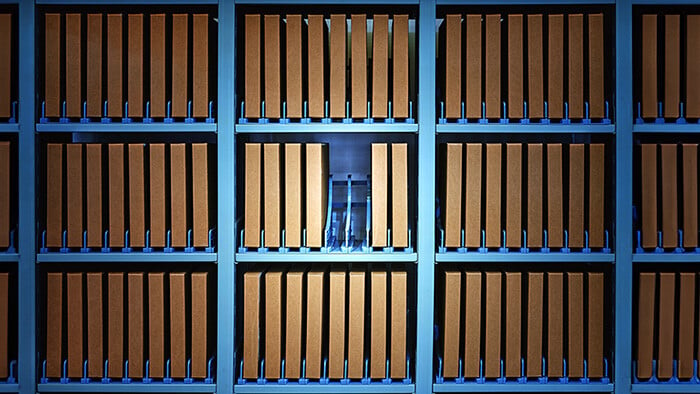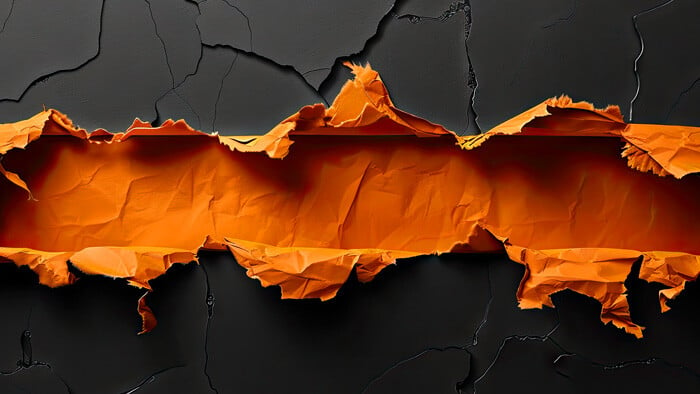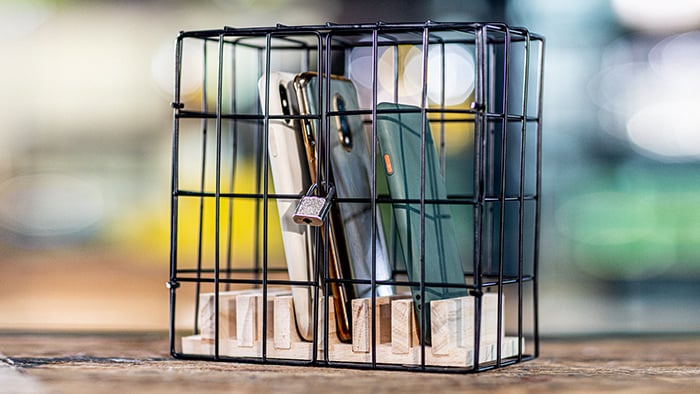1. Identify which Mac caches to clean
Macs generate several kinds of cache, including system data, application files, and browser data. This can make it tricky to pinpoint the source of performance issues. The good news is that there are various ways to identify which caches are safe to clear, without affecting your Mac’s stability.
Via Activity Monitor
Similar to Task Manager for Windows, Activity Monitor allows you to see all the running processes on your Mac, as well as information relating to cached data.
Here’s how to check your Mac’s caches using Activity Monitor:
-
Go to Finder > Applications > Utilities > Activity Monitor > Click the Cache tab.

-
Use the drop-down menu at the bottom of the window to view cached data for different periods.
-
If you don’t see the Cache tab, go to Apple menu > System Settings > General > Sharing. Tick Content Caching and then restart your Mac.

-
Reopen Activity Monitor. The Cache tab will now be visible.
Via ~/Library/Caches
Every app on your Mac stores its own cached files in the ~/Library/Caches folder. To locate them:
-
Open Finder and click Go on the menu ribbon at the top of the screen.
-
Select Go to Folder, type ~/Library/Caches, and click Go.
-
You’ll see folders for each app — open them to review cached files.

Via storage management
Storage Management provides an overview of disk usage and helps you spot areas where cached data may be taking up unnecessary space.
To locate storage management on a Mac, click the Apple icon in the top-left corner of your screen, select System Settings, then click Storage and review the items listed under Recommendations.

Here, you can also review categories like System Data and Applications for cache-related usage.
Via Terminal commands
Terminal provides direct access to system files and cache directories, but mistakes can cause serious issues. For that reason, it’s a tool best reserved for advanced Mac users.
If you’re experienced with using command-line tools, here’s how you can find cache data using Terminal:
-
Open Finder and go to Applications > Utilities > Terminal.
-
Type “ls ~/Library/Caches” in Terminal and press Return.

-
To see the size of each cache folder, type “du -sh ~/Library/Caches/*” and press Return.

2. Restart your Mac
Some performance problems can be resolved by restarting your Mac. This is because many cache files, especially temporary system caches and app caches, automatically clear upon a restart.
To reboot your Mac, click the Apple icon in the top-left corner of your screen and select Restart.
If your Mac is running very slowly, restarting your Mac in Safe Mode can help diagnose the problem. Safe Mode clears extra caches, checks your startup disk, and loads only essential system processes. This makes it easier to tell whether the slowdown is caused by third-party apps or system extensions.
3. Clear browser cache on Mac
No matter which browsing software you use, clearing the browser cache on your Mac or MacBook is relatively straightforward. Let’s take a closer look at how to do it on the most popular browsers.
Keep in mind that the cache begins rebuilding as soon as you start browsing again. To stay on top of it, consider using a dedicated browser cleaner with automatic maintenance to keep your cache tidy without extra effort.
In Safari
Here’s how to delete the browser cache in Safari:
-
Open Safari, click Safari in the top menu bar, and choose Settings.
-
Select Advanced and tick Show features for web developers.

-
In the top menu bar, click Develop and select Empty caches.

Once you’ve enabled the Develop menu, you can use a keyboard shortcut. Just press Command + Option + E to automatically clear your Safari browser cache.
In Chrome
Here’s how to clear the cache on Chrome for Mac:
-
Open Chrome, click the three dots in the top-right corner, and select Settings > Privacy and security > Clear browsing data.

-
Use the Time range drop-down menu to filter data by timeframe. Select All time to completely clear your Mac’s Chrome cache.

-
Tick Cached images and files and click Clear data.

You can also hit Command + Shift + Delete to quickly open the Clear browsing data menu.
You can limit cached file buildup by browsing in Incognito mode in Chrome, which uses a temporary cache that’s erased when you close all private windows. The trade-off is convenience — you’ll need to open a private window each time you browse, making it less user-friendly as a long-term solution.
In Firefox
Here’s how to erase your cache in Firefox:
-
Open Firefox, select History from the top menu bar, and then click Clear Recent History…

-
Use the Time range to clear dropdown to choose a timeframe (select Everything to completely clear your Mac’s Firefox cache). Then, tick Cache and click OK.

You can also use the keyboard shortcut Command + Shift + Delete to quickly bring up the Clear Recent History menu.
In Avast Secure Browser
Here’s how to clear your cache in Avast Secure Browser:
-
Open Avast Secure Browser, click the three dots in the top right corner, and select Settings.

-
Click Privacy and security and select Privacy Cleaner.

-
In the Time range dropdown, select All time (or your preferred period to clear). Then tick Cached images and files and click Clear data.

You can also use the keyboard shortcut Command + Shift + Delete to bring up the Privacy Cleaner window.
While cleaning up your temporary files can help improve your browsing experience, it doesn’t protect you from being tracked. Advertisers use web tracking techniques to gather insights into your habits and interests and target ads to you more precisely.

Even more invasive techniques like browser fingerprinting can also be used to create profiles of you based on your device, web browser, and IP address — making it easier to pick you out from the crowd.
To experience the open internet without being tracked or targeted, use Avast Secure Browser to scrub your online footprints, block ads, and more.
4. Clear system, application, and user cache
Deleting system files can cause serious issues, which is why you should never remove them. However, you can safely delete user and application caches to free up space.
While some of the cached files help your Mac RAM load apps faster, you may need to delete others to troubleshoot problematic programs. If you’re unsure, use a dedicated computer optimization app to help you figure out which ones can be safely removed.
Before you start, back up your Mac using Time Machine so you can easily restore any files if something goes wrong after deletion. Whether you’ve got a MacBook Air or MacBook Pro, here’s how to clear cache files on any Mac model:
-
Open Finder, click Go, and select Go to Folder…

-
Type ~/Library/Caches and click Go.

-
Click Caches, select the specific app’s folder you recognize, and drag its contents (not the whole folder) into Trash.

Make sure to empty the Trash to remove files permanently. If you’re uncertain about whether a file is important, it’s best to err on the side of caution and leave it in place.
5. Empty (“flush”) your Mac’s DNS cache
Your Mac’s DNS resolver translates website names into IP addresses and caches the results to speed up future connections. If it becomes outdated or corrupted — for example, after DNS changes or DNS poisoning — some sites may load incorrectly or not at all.
Emptying, or “flushing”, the DNS cache can fix these issues, but it doesn’t erase your full browsing history (including incognito browsing history).
Here’s how to flush the DNS cache:
-
Open Finder, and go to Applications > Utilities > Terminal.
-
Type sudo dscacheutil -flushcache; sudo killall -HUP mDNSResponder and press Return.
-
Enter your administrator password and press Return.

When entering your password, no characters or asterisks will appear. After you press Return, you won’t see a confirmation message either, but if no error message shows up, the command has worked.
6. Use an automatic Mac cache cleaner
While clearing your browser is pretty straightforward, it’ll immediately start to build up again. And when it comes to system and application caches, it’s best not to mess around with folders that might accidentally break something.
Third-party cleanup tools like Avast Cleanup for Mac provide an easy, automated way to manage cache and temporary files on your Mac.

Simply download, install, and launch Avast Cleanup. Then click Start scan to see which files are taking up space.
What are caches on Mac?
Cached files are temporary files that your computer downloads and stores to save time when you reopen apps and programs in the future. The next time the cached files are needed, your computer quickly loads the data from the cache rather than downloading it again or searching for it in your system’s permanent storage.
There are three main types of caches:
-
Browser cache: Your browser downloads images, videos, scripts, and other multimedia whenever you visit a webpage. These caches are saved on your Mac’s disk to enable faster page loads.
-
Application cache: Also called the user cache, the app cache stores cached files that are created by all other user applications. This includes Apple’s own apps, such as Spotlight and Maps, and third-party software such as photo and video editing programs.
-
System cache: macOS stores cached files on disk to help system services run smoothly. Don’t delete or alter these files — it can cause your computer to crashor other serious problems.
Together, the files stored in your system cache, browser cache, and application cache form part of “Other” storage/System Data on your Mac.
What does clearing cached data do?
Clearing your cache deletes unnecessary data and frees up disk space. It also refreshes browser content — allowing you to view the most recent version of webpages — and helps troubleshoot app issues so they run more smoothly.
Every website you’ve ever visited online — every e-shop, social media profile, and search you’ve made — stores cached files, images, and videos on your Mac. Add in your system and application caches, and you end up with gigabytes of unnecessary files taking up space.
That’s why regularly clearing the cache is a great way to help clean up your Mac and speed it up. The same goes for iOS devices — clear the cache and cookies on your iPhone or iPad for faster, smoother browsing.
Can I delete all my cache files on a Mac?
No, you can’t delete your entire cache, because your computer accesses some cached files at all times. You can remove all cache files that aren’t actively in use, but that doesn’t necessarily mean you should.
When dealing with system and user (application) caches, you can safely delete inactive files — but do so selectively. Caches are designed to speed up loading times, so clearing them for apps you use often, like a photo editor, can slow things down, especially mid-project. System caches, in particular, usually contain files essential for smooth operation, so use extra caution when clearing them.
If your browser is running slowly or you want to free up space by removing junk, clearing your browser cache is a safer choice than deleting system or app files. Browser caches aren’t essential to your Mac’s performance, while system and application caches should only be cleared when troubleshooting issues or if storage is critically low. To reclaim space more safely, consider uninstalling apps you no longer use and removing unnecessary bloatware.
Cache clearing made simple with Avast Cleanup for Mac
Clearing your cache sounds simple, but it isn’t always straightforward. Browser caches refill almost instantly, and digging into system or app caches can be risky if you’re not an expert — one wrong move could disrupt how your Mac runs.

Want to safely reclaim gigabytes of extra space instantly? Avast Cleanup clears out junk like caches, crash reports, log files, and old downloads — without touching the files you care about. It also helps you slim down your photo collection by finding duplicates and low-quality shots, and makes it easy to delete large, forgotten files. Keep your Mac running lean and clean with automatic maintenance from Avast Cleanup.



































